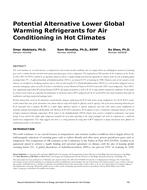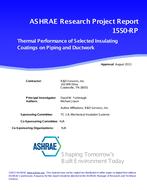This paper describes a procedure for deriving a dynamic model of an air-conditioned room (space) by applying physical laws to it. The room under control is divided into five zones. The dynamics of each zone can be described by a lumped-capacity model, and a total of 15 linear differential equations can be obtained. The model parameters derived from this procedure can be numerically related to the overall heat transfer coefficients for the room, and the various significant time constants associated with the room envelope. The numerical model can be successfully reduced to a well-known first-order lag plus deadtime system. Proportional-plus-integral (PI) controllers must be designed by estimating deadtimes, time constants, and gain constants of the system. Indoor temperature and relative humidity may be maintained at setpoint values by an air-handling unit using a PI control action. The PI parameters must be carefully tuned to produce a less oscillatory response. The tuning technique, using the partial model matching method, is investigated from a practical viewpoint. A mathematical model of the heating, ventilating, and air-conditioning (HVAC) system, which consists of an air-conditioned room, an air-handling unit, and PI controllers is developed. Simulation results showing the closed-loop responses of indoor temperature and indoor relative humidity are given. The controllable regions on a psychrometric chart are established to demonstrate the practical applicability of our simplified dynamic model. This modeling procedure can be especially useful for control strategies that require knowledge of the dynamic characteristics of HVAC systems.
Units: SI
Citation: ASHRAE Transactions, vol. 106, pt. 2
Product Details
- Published:
- 2000
- Number of Pages:
- 14
- File Size:
- 1 file , 590 KB
- Product Code(s):
- D-7231


